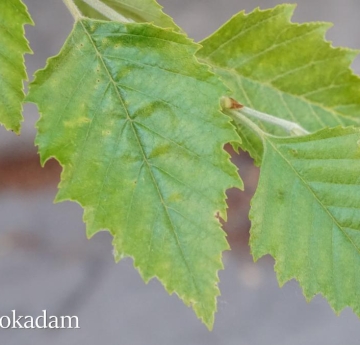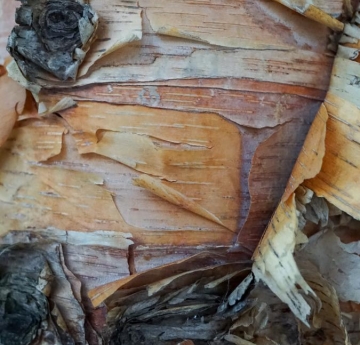Scientific name: Betula nigra
Common name: River Birch
Native: Yes
Native range: Native to the eastern United States [1,2,3,4].
Distribution in North America: Click to view the USDA Plants Database page for B. nigra.
USDA Zones: 4-9A [3]
Maximum age: River birch is short lived, surviving for a maximum of 40-50 years [6], but often only living to 30-40 years in urban plantings [3].
Ecology: The young foliage is browsed by white-tailed deer, and the seeds are consumed by birds and rodents [1,2,3]. The leaves also host the larvae of the mourning cloak butterfly [7].
Ethnobotany: Its tolerance for acidity lends it both to its use in soil-reclamation in strip-mining affected soils. It is also highly valued for its aesthetic value and is commonly planted in both parks and other green spaces [2,4]. The syrup can be used to create birch beer or vinegar [2]. Indigenous American groups use it as a pain reliever, gastrointestinal aid, and cold remedy [5].
[1] https://plants.usda.gov/DocumentLibrary/
[2] https://plants.usda.gov/DocumentLibrary/
[3] http://hort.ufl.edu/database/documents/
pdf/tree_fact_sheets/betniga.pdf
[4] https://www.srs.fs.usda.gov/pubs/misc/
ag_654/volume_2/betula/nigra.htm
[5] http://naeb.brit.org/uses/species/578/
[6] https://www.fs.fed.us/nrs/pubs/na/NA-FR-02-97.pdf
[7] https://hort.extension.wisc.edu/articles/river-birch-betula-nigra/





